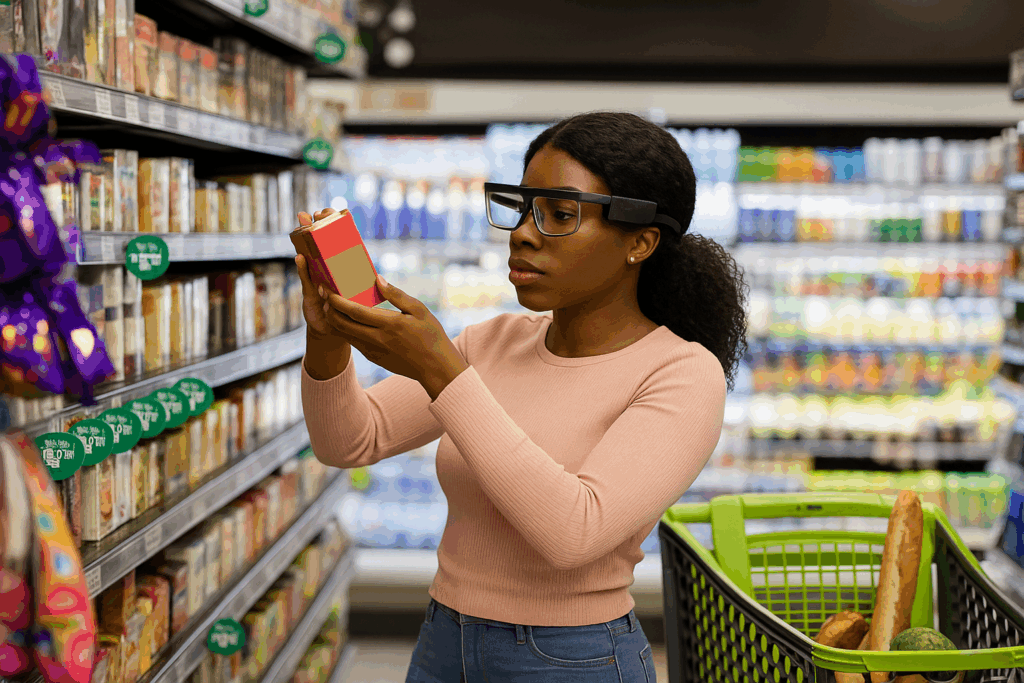
ShopperPulse: A New Approach to Decode the Shopping Experience
Filed Under: B2B, Shopper, CPG, Food & Beverage, Grocery, Health & Beauty, Retail, Shopper Insights, Behavioral Science, Ethnographies, Eye-Tracking, Journey Mapping, Neurological Immersion, Path to Purchase, Qualitative Research, Quantitative Research, Segmentation, Shopper Journey
Kayla Myhre
Director, Shopper Insights Research
When stepping into a retail environment, most shoppers can expect to be met with an array of sights, sounds, and experiences all vying for their attention. While this sensory-rich atmosphere can be exciting and memorable, past research has consistently revealed a downside: many shoppers feel overwhelmed by in-store retail experiences, especially as it pertains to the sensory experience.
A recent study on the Beauty category found that nearly 7 in 10 shoppers feel overwhelmed by the in-store shopping experience for beauty products—a sentiment often shared across categories and retailers. As researchers, we at C+R are curious about and dedicated to better understanding the shopper experience and helping our clients make sense of shoppers’ feelings and behaviors.
Gaps In Understanding the In-Store Experience
To truly understand the complexities of in-person retail experiences, we as researchers have a range of methodologies at our disposal, including surveys, intercept interviews, shop-alongs, asynchronous shopping missions, and more.
However, each of these approaches can overlook elements of the full experience by relying primarily on stated responses, or what participants choose to reveal or explain. Live shop-along interviews are a popular approach for their ability to adapt the flow of conversation based on environmental factors and respondent behaviors, as well as observe shoppers’ behaviors firsthand. Still, despite the unique value qualitative approaches offer, they can leave additional insights around the shopper experience untapped.
In retail settings saturated with sensory stimuli, it’s especially important to explore beyond that which can be verbally articulated or observed to understand the true impact on shoppers.
Behavioral Science to Fill the Gaps
To fill this gap, we can turn to behavioral science techniques to tap into deeper, subconscious reactions to gather a more complete picture.
Our newest approach—ShopperPulse™—embodies this mindset by combining Visual Attention methods with System 1 behavioral science to go beyond what shoppers tell us or what we can observe. It helps uncover the innermost reactions they have to the shopping environment.

At the heart of ShopperPulse is two highly effective tools:
- SmartPulse (powered by Immersion) – a neuroscientific approach that measures brain activity to uncover unspoken reactions and see what drives action
- Eye Tracking – captures shoppers’ gaze and behaviors to identify aspects of the shopping experience that elicit “Immersive” states, in addition to typical eye tracking metrics
The blend of these two tools allows us to analyze and understand shoppers’ experiences with new depth. Eye tracking shows us the shopper perspective with pinpoint accuracy so we can understand their attention to various visual stimuli (products, shelving, displays, retail media, signage, checkout, etc.). Complementing this, SmartPulse biometric tracking gauges the subconscious reactions to these various elements and unveils the emotions underpinning shopper decisions. It also provides additional data from which to probe and learn more about their reactions to the sensory stimuli they’re experiencing.
When layered into live shop-along interviews, ShopperPulse helps reach new depths. By pairing the two, we’re able to better discern how shoppers feel while shopping, and which products, interactions, or experiences in-store are most likely to provoke an action (for example, a purchase). While observation and discussion already provide valuable insights, the addition of ShopperPulse reveals unspoken reactions and intentions that may otherwise go unnoticed.
Overall, as retail environments become increasingly complex, understanding the nuanced interplay between sensory stimuli and shopper behavior is crucial. By integrating traditional research methods with innovative approaches such as ShopperPulse, we can fill knowledge gaps and gain a deeper understanding of in-store shopper experiences.


Now on-demand:
Shopperpulse webinar
What Shoppers See, Think, and Feel Without Saying a Word

